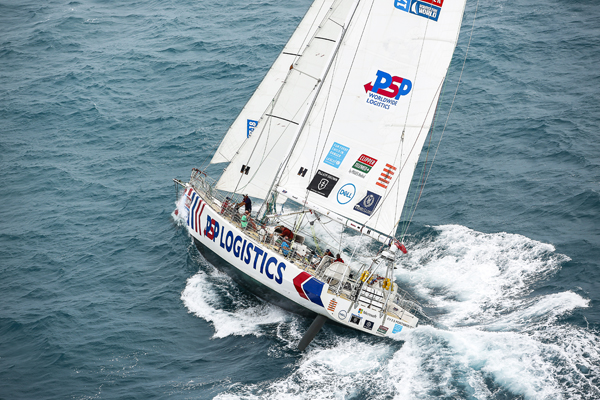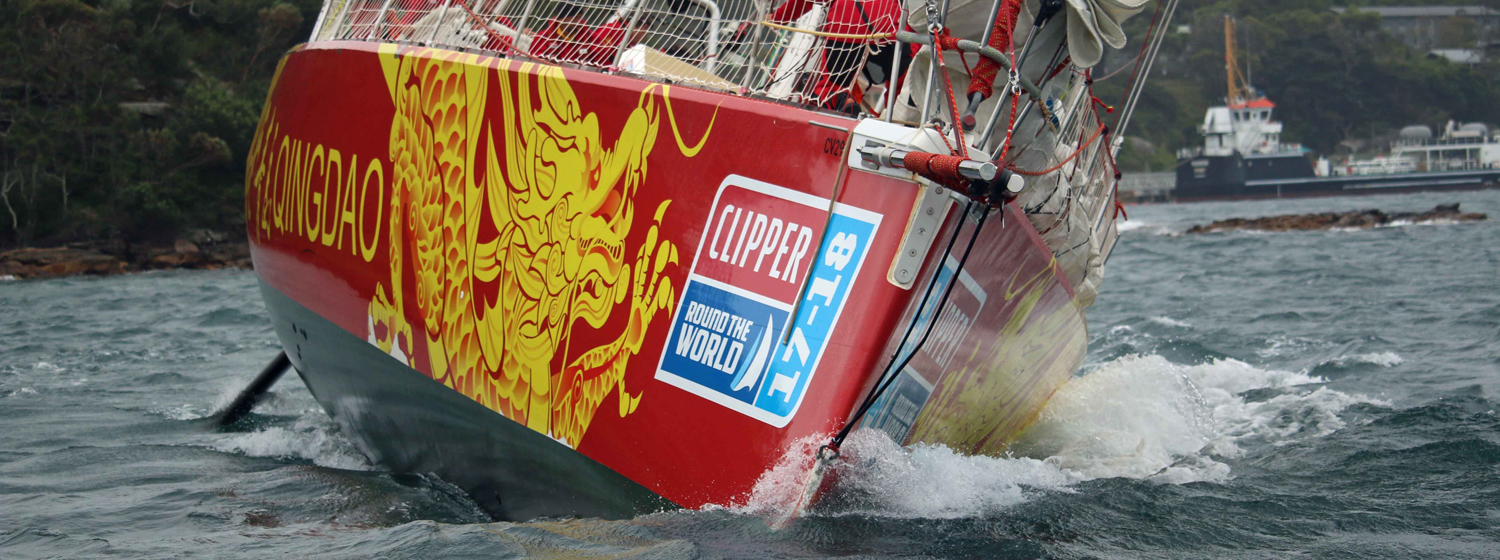The Clipper Race is one of the longest and toughest sailing races, a challenge for both crew and yacht alike as they take on the world’s oceans. The performance and maintenance of the fleet of identical Clipper 70s is fundamental to success during the 40,000 nautical mile circumnavigation. The current edition of the race welcomed Coppercoat as the first Official Antifoul Supplier to the Clipper 2017-18 Race and the powerful and most copper-rich antifouling has been put to the test ever since.
The Clipper Race route encompasses many oceans, seas and bodies of water exposing the Clipper 70s to a vast array of fouling organisms. Biofouling, the result of growth and accumulation of microorganisms, plants and algae on the hull, can significantly increase drag and lead to diminished performance.

IMAGE: PSP Logistics arrival into Whitsundays - Credit: Brooke Miles
In previous editions of the race this meant that the full fleet would have to be lifted out of the water at the halfway point in Australia to apply a new layer of antifoul. Thanks to Coppercoat this process is no longer needed.
Since its application to the fleet during the last refit process which ran between September 2016 and June 2017, the yachts have been used for Clipper Race training on the Solent and raced over 20,000nm. After sailing from Liverpool, UK, to the Whitsundays, Australia, Clipper Race Maintenance Manager, Justin Haller, dived on the boats at the Abell Point Marina to inspect the hulls and underwater areas of the yachts and see how well the Coppercoat antifouling was performing.
Justin reported: “The hulls are looking really, really good. The majority of the boats had absolutely no growth on the hull, a few had a small amount of growth on the rudders but mainly the parts that did have growth were where there is exposure to sunlight. On the whole the results have been absolutely brilliant and far better than I expected.
“Coppercoat has made a huge difference and saved us a lot of work. At the halfway point, usually during the Sydney stopover, we previously hauled the boats out of the water to be washed and re-antifouled but the new process has saved us and the crews about a week.
“We also don’t have to re-antifoul during the next refit process where we would normally have to sand back the old antifoul and reapply the new product which can take five people two days to complete so its saving a lot of time and effort.”
Made from recycled copper and thanks to its combination of solvent-free non-eroding epoxy resin and the high purity (99%) copper make it not only strong but long lasting. The exposed copper particles allow the underwater surface to withstand the unrelenting attack of a wide variety of fouling organisms the fleet will encounter which, as classified as non-leaching, is considerably kinder to the environment than self-eroding alternatives.
The Clipper Race is a unique platform to test the strength and endurance of any product and so far, Coppercoat has been standing up to the challenge. Justin went on to say: “The added benefit is that you don’t get the growth build up on the hulls so they look a lot better when they are out sailing and they sail a lot quicker.”
By limiting the fouling on the hulls, the application of
Coppercoat has meant less drag from its lasting smooth surface and clean hull. The
results have been a significant time saving for both the Clipper Race
Maintenance Team and the crew alike, as well as reducing costs and ensuring the
efficiency of the Clipper Race fleet though the water. With the podium places
and ocean sprints being decided on minutes and seconds every ounce of
performance makes the difference.
To find out more about Coppercoat visit coppercoat.com.
